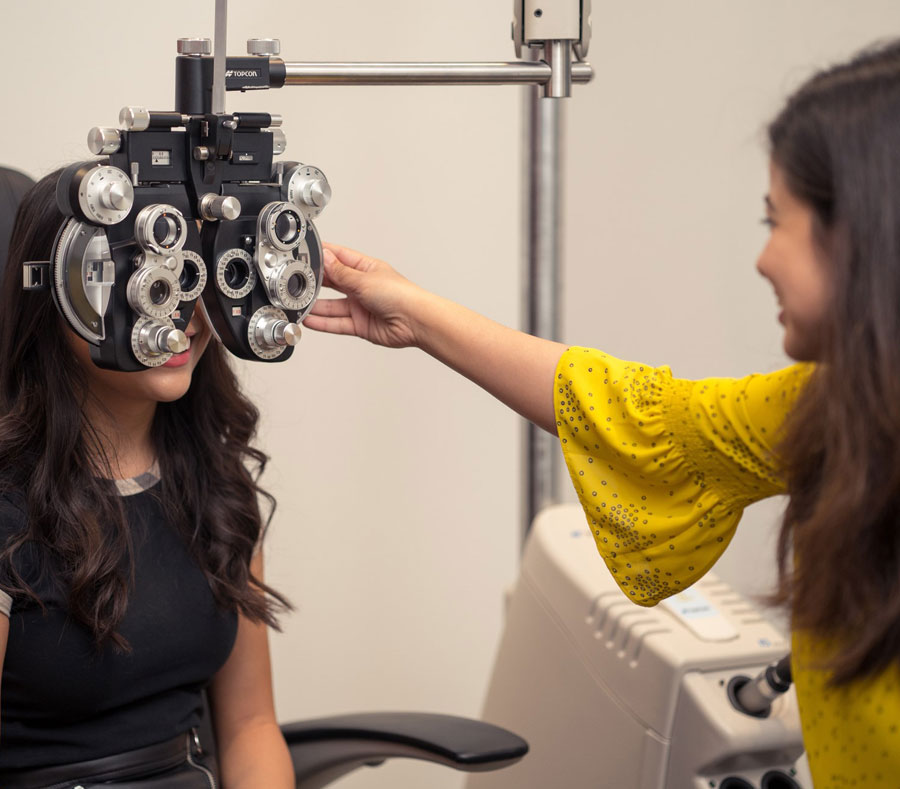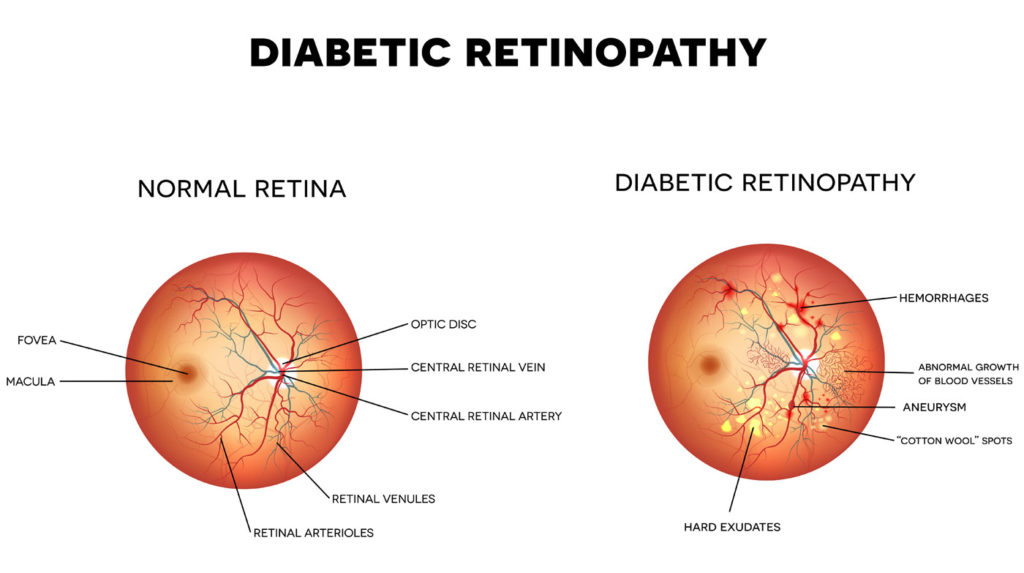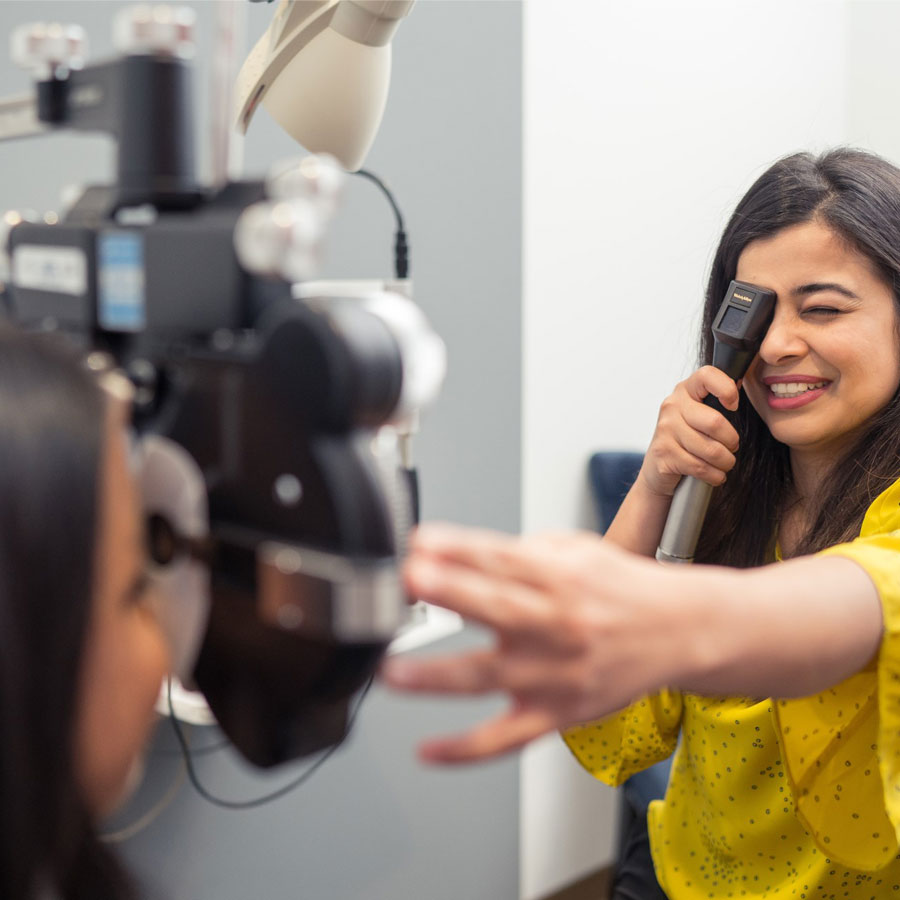Diabetic Eye Care and Exams

Diabetic Eye Care and Exams
A diagnosis of diabetes doesn’t just affect blood sugar levels and insulin production – it can also affect eye health and vision. Individuals with diabetes face a severely increased risk of developing serious eye diseases and conditions such as cataracts, glaucoma and diabetic retinopathy. The effects of vision loss from diabetes may be temporary or can become severe and irreversible. Proper diagnosis and treatment can be the difference in protecting your eyes and keeping your vision strong.
In fact, 80% to 85% of diabetics develop an eye disease, and diabetes is the leading cause of blindness in individuals between 25 and 70 years of age.
Why does Diabetes affect the eyes?
When diabetes is uncontrolled, unstable blood sugar levels damage the blood vessels in the eyes (and throughout the body). As a result, the body’s cardiovascular system cannot efficiently deliver oxygen and nutrients to vital structures inside the eyes. In addition, these blood vessels often weaken and burst, leaking fluid into the eyes and prompting the body to grow additional blood vessels (neovascularization). These new blood vessels put pressure on the retina, causing it to detach.

Protect your vision through Eye Exams

In addition to working with your primary care provider to actively manage your diabetes with diet and medication, you can also take steps to safeguard your eyes from diabetes-related diseases by scheduling regular diabetic exams with an eye doctor.
Most eye conditions caused by diabetes can be treated, as long as early signs are detected before the disease has progressed far enough to cause major damage to the eyes’ internal structures.
